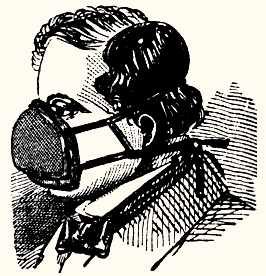A Merry Holidays and a Happy New Year to all of you who journeyed with us this past year. It has been a see-saw kind of year with some ups and some downs. As some of you know we were trying to sell the business. We've decided we are not going to sell the business and instead will ride the business into the sunset (as we prepare and get ready for retirement probably another 10 years). As we go into our 35th year of being in business we continue to adjust and modify the services we offer to our clients, allowing our clients to utilize our 35 years of experience and Angelo Garcia, III's 40+ years of experience.
 |
| Christmas Tree at Rockefeller Centre |
In 2023, we will continue our At Your Convenience service. The At Your Convenience service brings the training or respirator fit testing to your location. All we need are five or more people and we're At Your Convenience! Tired of traveling through rush hour traffic to get to your training center? Tired of paying travel expenses for your employees for training? Tired of the same old non-productive training classes? Or are you just tired of the same old training? If you have answered yes to any of the above questions, then you need to give us a call. Future Environment Designs Training Center (FEDTC) (with a Coursecheck rating of 4.8 out of 5) is now providing training At Your Convenience. We can perform the training in your office. We provide a laptop, a projector, PowerPoint presentations, and a wireless device for internet access. You provide the seating and the blank wall (no blank wall, we’ll provide the screen). We do the rest. We can do this training for any of the courses and services in our Course Offerings and Training Services Catalog.
 |
| The Bergdorf Goodman Windows |
In 2023, we will be expanding our collaboration with SiteDocs to help you elevate your safety programs. Future Environment Designs can work with you to create the various Occupational Safety and Health Administration (OSHA)-compliant safety and health programs (i.e., hazard communication, respiratory protection, confined space entry, bloodborne pathogen, and construction safety & health programs) that would go into the SiteDocs platform. We can help you meet the training requirements, develop the data (such as Safety Data Sheets and Chemical Inventories), and create the checklists that would be used by your staff to meet the regulatory requirements. With the SiteDocs platform that information would be readily available to all your staff. To learn more about what SiteDocs can do for your safety program, you can book a quick call with Brent Martyniuk here. To learn how Future Environment Designs can help you with developing your various safety and health programs contact us here. We believe the SiteDocs platform would greatly impact your business helping you save time and money, and elevate your safety program from being on the shelf to being part of your day-to-day operations.
 |
| Saks Fifth Avenue |
FEDTC continues to offer our One-Stop Service which allows employers to contact us or register online to:
- Schedule staff development on asbestos, mold, or other safety and health regulations (see our Course Offerings and Training Services Catalog.),
- Schedule respirator medical evaluations to comply with the OSHA respiratory protection standard 1910.134,
- Order the proper respirator and filters for your staff, and
- Schedule quantitative respirator fit testing to comply with the OSHA respiratory protection standard 1910.134, to be performed on the day of the class.
We provide this One-Stop Service making your occupational safety and health requirements simple and easy to complete. Contact us here or register online here.
Finally, FEDTC will continue to lead the field by attending the Professional Abatement Contractors of New York (PACNY) Environmental Conference (save the dates March 16-17, 2023) and the Environmental Information Association (EIA) National Conference & Exhibition (save the dates March 25 - 29, 2023). We will bring back the current information from these conferences and share it in our classes. FEDTC is one of the few training providers that provide the FEDTC dropbox folder (with hundreds of reference documents regarding indoor air quality, asbestos, lead, mold, etc.), we also provide our students with the negative air app (to help calculate the number of negative air units for a work area), our project monitor and air sampling technician courses include a New York State or New York City asbestos air sampling table (these can be purchased here) and for those considering opening your own business our book "Do As I Say, Not As I Did What I've Learned After 30 Years of Being in Business" discusses the four pillars of operating a successful business, you can purchase the book here. We wish you a Merry Holidays and Hope to see you in the New Year!

.png)







































